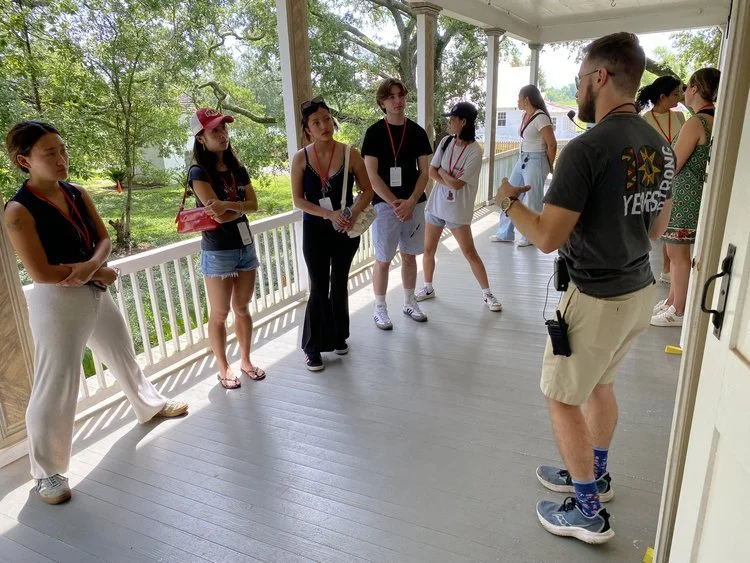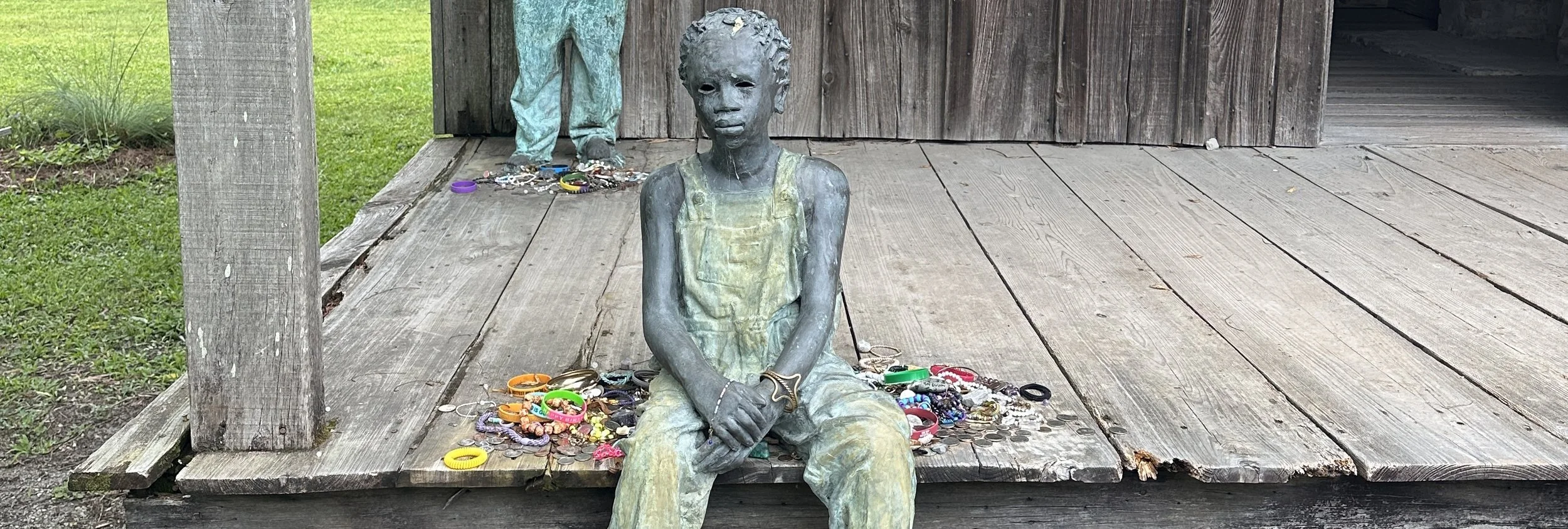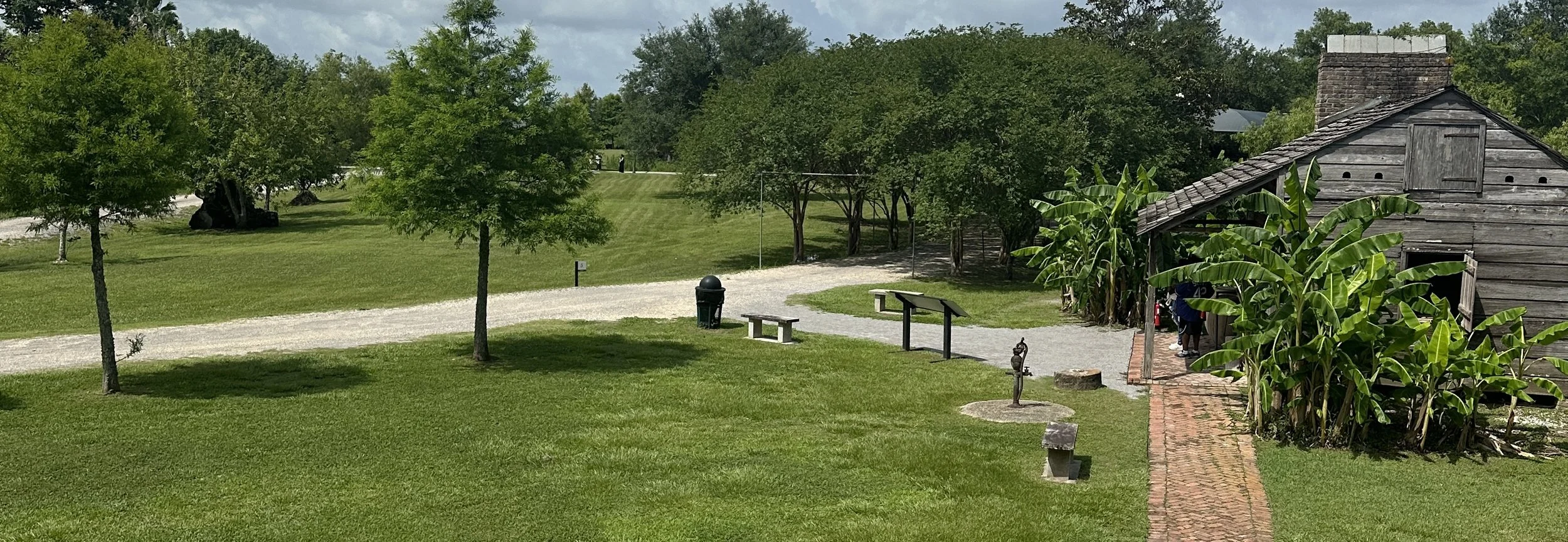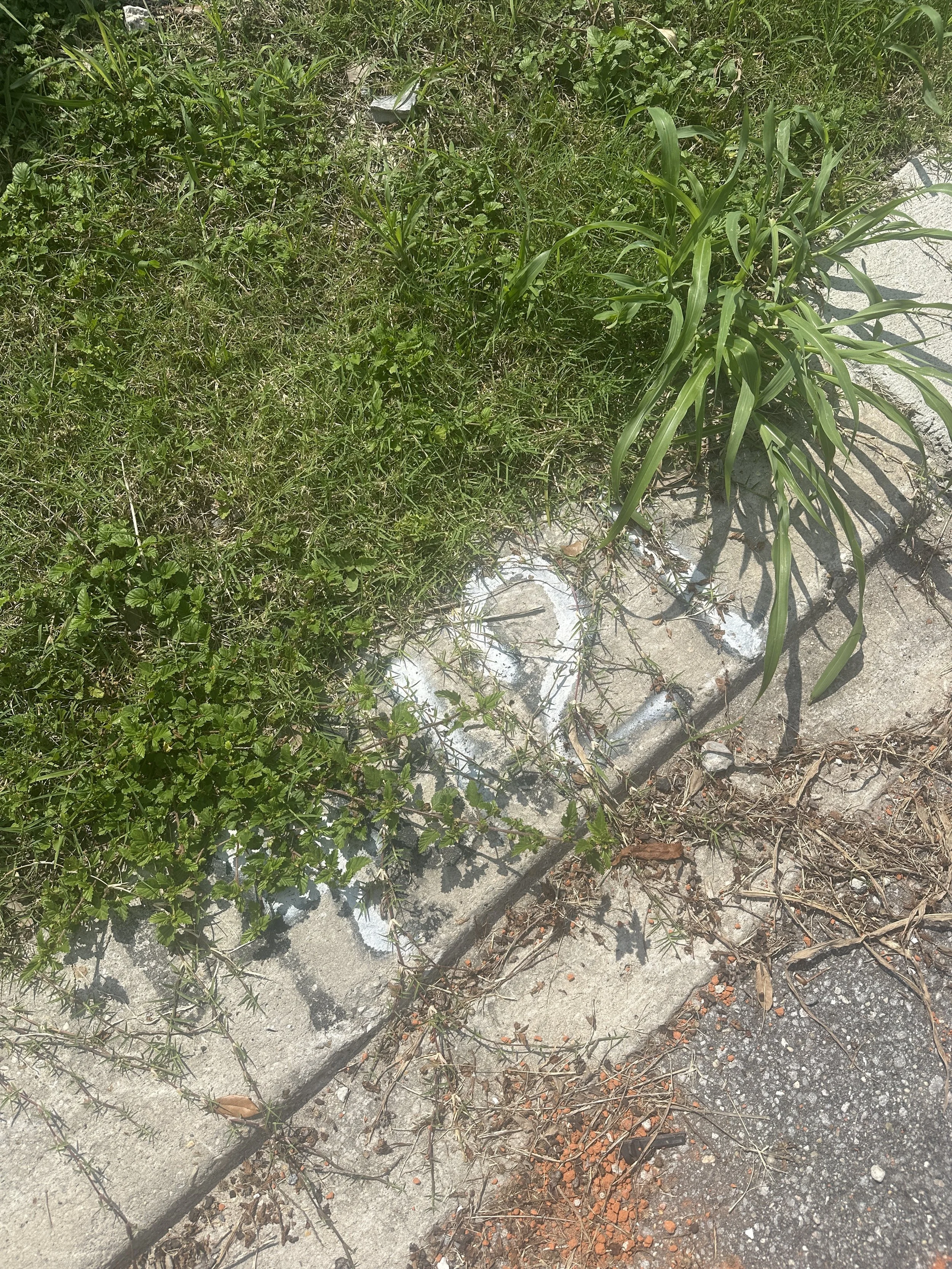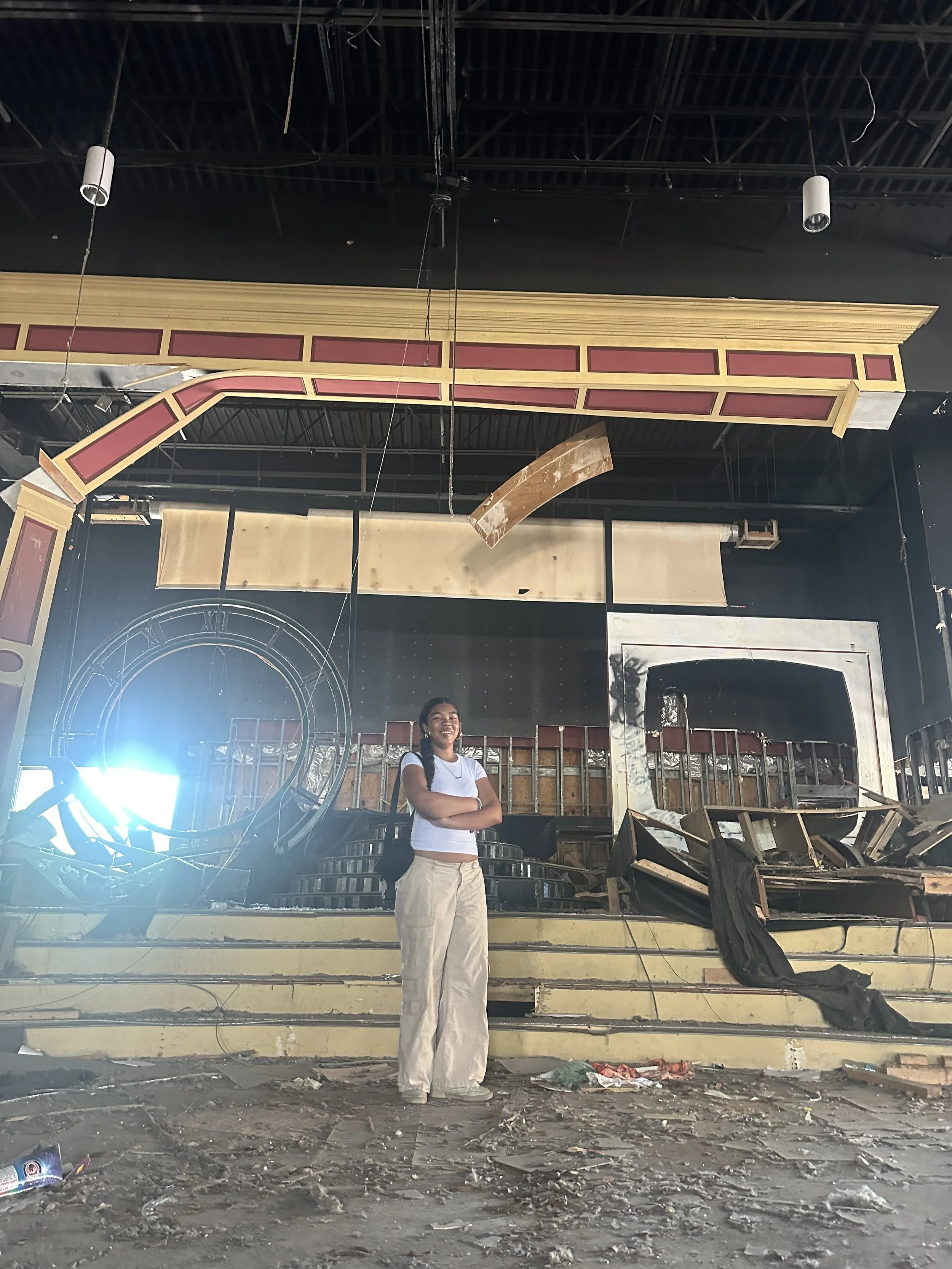“Innovating” New Orleans
“No place to go now but into deep ground.”
In most of my classes, we’re told to “live in the future.” That’s how innovation gets framed, constantly looking ahead, dreaming up what doesn’t exist yet, and figuring out how to make it real. It’s a mindset that values new ideas, new tools, and as a designer and builder, I’ve leaned into that forward thinking impulse.
But this time, we’re asked to do the opposite.
This assignment wasn’t about disruption, creation, or invention. It was about digging into what’s already been lost, taken, or erased. We were focused on New Orleans, a city filled with complexity: a place where grief and joy live together, where memory bleeds through the cracks demanding to be seen. That tension shaped the heart of our journey.
Whitney Plantation. (May 30th)
We began by examining the roots, the literal and historical foundations of New Orleans, built on the backs of enslaved people. Interview With a Vampire, 12 Years a Slave, and Toni Morrison’s Beloved are all remind us again and again that innovation in this city did not begin in happiness or joy. Instead, it began in violence and exploitation.
Bracelets Left Behind in Remembrance (May 30th)
Walking the grounds of the Whitney Plantation was already emotionally heavy. The air was thick with memory, full of unforgiving stories about violence and horrible atrocities. You can read about slavery, learn about it, watch films, but to stand on the same soil felt all the more powerful.
Scattered throughout the plantation were statues of enslaved children, meant to honor the real enslaved kids who lived and died on the plantation. Most had little offerings at their feet: bracelets, earrings, hair ties. These were things visitors had left behind in remembrance.
The one that struck me the most was a statue of an African American angel holding a baby in her arms. In typical Western iconography, angels are almost always depicted as white. I don’t think I’ve ever seen a Black angel before. Beside her was a small teddy bear, an offering someone had left behind. That’s when it all became too real. Grief was still being felt and processed, decades later. Someone had felt something and chose to leave a piece of that emotion behind. Maybe it was a parent, trying to connect with the loss in the only way they knew how.
Angel & Bear (May 30th)
Whitney Plantation (May 30th)
The Yellow House’s Curb (Jun 2nd)
The Yellow House by Sarah M. Broom is a memoir about her family, her home, and the neighborhood that disappeared after Hurricane Katrina. The neglect, the false promises, the fact that the house was poorly built from the start. Broom’s mother bought it with such hope, only to watch it fall apart. By the time the levees broke, the city had already failed her.
Visiting the site where the Yellow House once stood was eerie. The pavement was cracked, and the address was hidden under overgrowth on the curb. The very tree described in her book, still standing just a year prior, was now gone. It was almost like the house had never been there at all.
While the Yellow House had been erased, in contrast, Jean-Marcel St. Jacques, a local artist, had been collecting salvaged wood from the wreckage of Katrina and turning it into sculptures, much like altars. These pieces of wood carry memory in every cracked plank, each one a fragment of another Yellow House that might’ve existed. Many are once again surrounded by scattered jewelry: bracelets, rings, left behind by visitors like offerings. It reminded me of the Whitney Plantation. Different spaces, different histories, but the same language of remembrance.
“We were here, and we still are.”
As someone who wants to design for the future, that hit me hard. How can we truly innovate for a place or a people if we don’t know what they’ve already survived? It’s impossible.
Jean-Marcel St. Jacques’ work (May 28th)
Later that day, we met someone who saw something different in the ruins: possibility.
Elvin Ross, a film composer and creative entrepreneur, took us to Jazzland, an old theme park that had been abandoned after Katrina. Most people see a ghost town, but not Elvin. He saw a fresh start, a new project.
He walked us through his vision: turning Jazzland into a film studio, resort, and corporate event hotspot. He was so open with us talking about the pivots, setbacks, and constant reworking. It was almost inspirational.
However, I couldn’t help wondering: Can something new really honor what was never fully realized? It’s so easy as an entrepreneur to dream big when land feels abandoned. But that land holds the weight of a dream that never got to occur. When Elvin speaks of revival, replacing the old with the new, I find myself caught between admiration and hesitation. Can a new dream really rise from an old one that never had the chance to live?
Thalia in the Wreckage of Jazzland (Jun 2nd)
Destroyed Building (Jun 2nd)
I’m someone who’s constantly thinking about what to build next, and I came to New Orleans with the same mindset. However, I’ll leave now understanding that innovation doesn’t start with invention, it starts with listening. Walking the ground and recognizing whose stories were never told, whose homes were never built, and whose dreams were never realized.
To design mindfully for the future, we are forced to confront what was lost in the past. Acknowledge it, mourn it, and learn. It’s hard but it’s necessary for ensuring innovation can mean anything real. Cities may flood, my houses might fall, but memory, if taken care of, ultimately becomes it’s own kind of structure: one we are able to build on.
“The facts of the world before me inform, give shape and context to my own life.”

